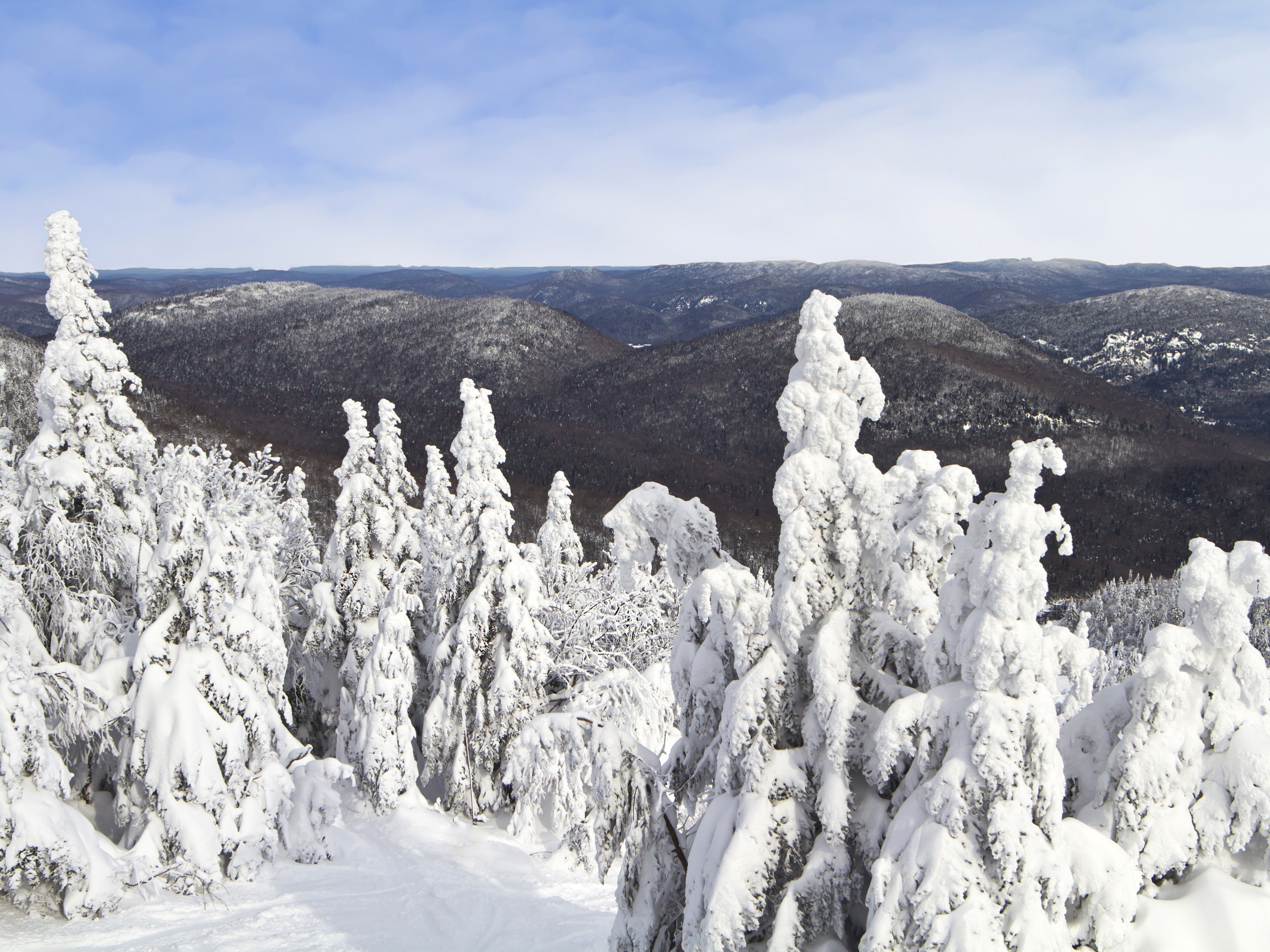Our Travels: Exploring Quebec’s National Parks
Offering breathtaking scenery and year-round activities, “La Belle Province” more than lives up to its name. Join us on a tour of Quebec’s national parks.

Thousands of white birds chirping everywhere around me, the salty wind of the St. Lawrence River on my face, the sound of the waves and the warmth of the sun on my skin: I can still remember every sensation from my first visit to Bonaventure Island 12 years ago. At six years old, I might not have realized it at the time, but I had just been bitten by the outdoor bug.
Those birds, with their dark wing tips and delicate yellow faces, were northern gannets; the ones I saw were part of the largest and most accessible colony in the world. More than 120,000 northern gannets live on this enchanting island, which is part of Île-Bonaventure-et-du-Rocher-Percé National Park. This amazing spot is just one of the wonderful parks in the province of Quebec. While Alberta and British Colombia often spring to mind when we think of Canada’s national parks, Quebec also offers us beautiful scenery, especially during winter.
One beautiful October day during the school break, my friends and I went on our first road trip. Our destination: Grands-Jardins National Park near Charlevoix. Climbing the hills along a bumpy road in an old yellow Beetle, we peered out the windows at the trees ablaze with fall colours, from dark red to golden yellow. It felt as if we were in another world; I still get goosebumps when I think about it. The three-day trip was short, but it included a wonderful hike at the craggy Mont-du-Lac-des-Cygnes and camping in the mountains. The park’s trails offer several types of vegetation, including subarctic taiga, rugged tundra, and mountain and boreal forests. Visitors can also go canoeing, fishing and kayaking.
While it’s tempting to stay home, snuggle in blankets and watch movies during Quebec’s cold winters, there’s plenty to do outdoors. Most national parks, including Grands-Jardins and Jacques-Cartier, stay open and offer cross-country skiing, snowshoeing and winter hiking, with trails designed for all levels. Since there’s more snowfall in those regions, you are literally surrounded by a white paradise; there’s no better way to relax and escape the stress of the city. Some national parks, such as Mont-Orford, even feature magical nighttime snowshoeing expeditions by torchlight. Each park has something different to offer, from tobogganing to ice fishing, and you’ll never get bored exploring these lesser-known Canadian gems.
Monts-Valin National Park in Saguenay-Lac-Saint-Jean is one of my favourite destinations because of its strange wintertime phenomena: ghosts and mummies. These “ghosts” are caused by strong precipitation in January and February that accumulates on trees and gives them funny white shapes resembling phantoms. “Mummies” are created when clouds hang low over the mountain summits and leave tiny droplets of water on the trees, which then freeze and look like frosty mummies.
These whimsical ice creatures are located in the park’s Vallée des Fantômes (Valley of Ghosts) and the Contrée des Momies (Land of the Mummies), which are accessible by a 45-minute ride aboard the Phantom Express, a snowcat minibus. The expedition includes a snowshoeing trek among the bewitching ghosts along a moderate three-kilometre trail. The trail also leads to Pic Dubuc; at an altitude of 984 metres, the spot offers incredible panoramic views. You can add to the experience, as I did, by spending a night in the park in one of the rustic rental cabins. There are many other activities as well, such as Hok skiing, a new sport that combines snowshoeing and cross-country skiing.
I could go on and on about all the amazing parks in Quebec, but instead, I hope you’ll discover their beauty and wonders in person. Who knows: You might get bitten by the outdoor bug, just like I was!



